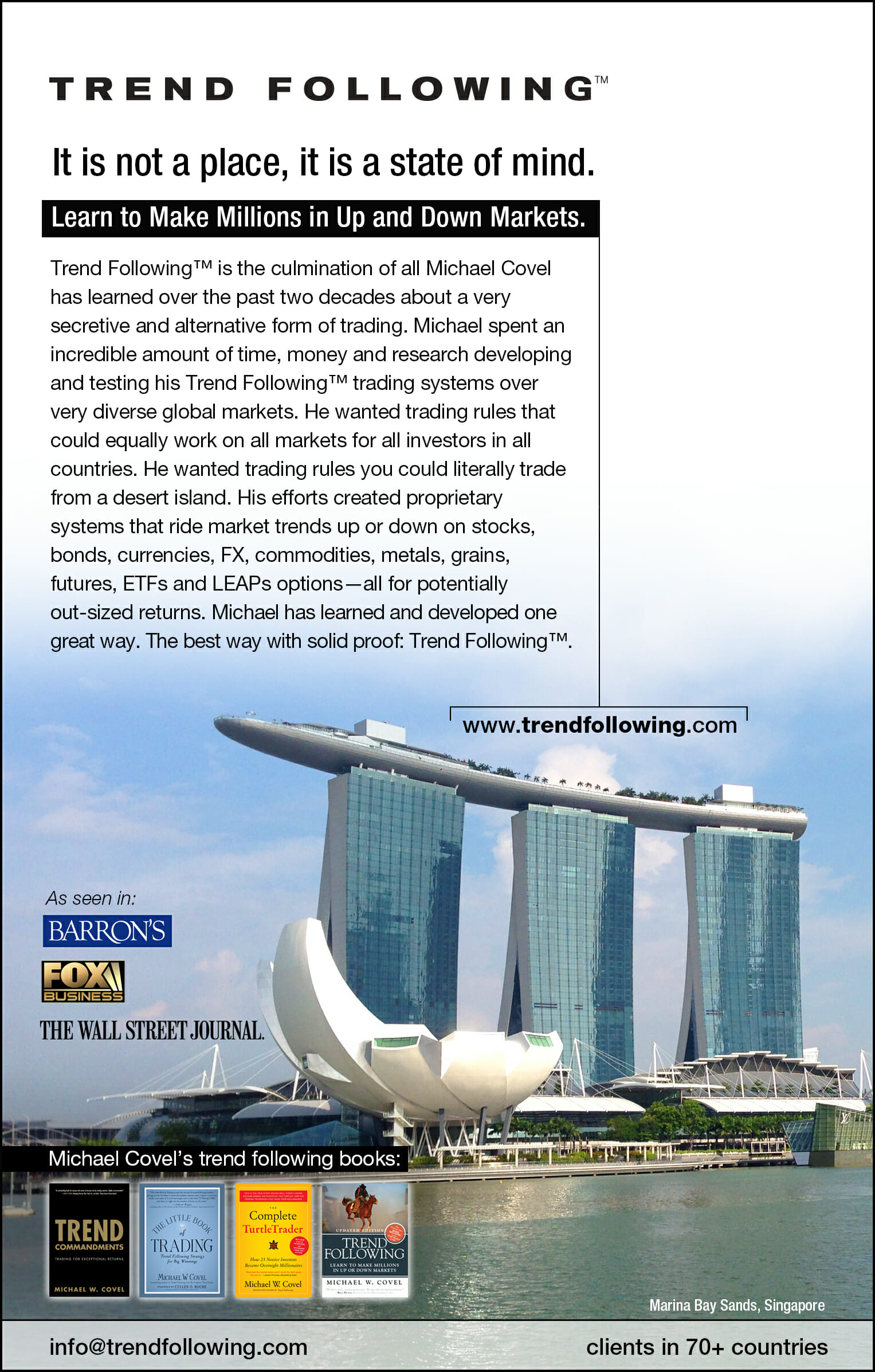The following interview was with renowned psychologist Johan Ginyard, M.Sc.:
Q: How did you end up here?
Johan: I don’t really remember how I first got in contact with the site. It feels like it was ages ago I first visited TurtleTrader. Perhaps I was searching for information about money management on the net and just ended up at TurtleTrader or maybe it was an interest in Trend Following philosophy itself. I can’t remember, but I’m coming back again and again. I like the site mostly for the vast amount of good information and interviews and I think it is extraordinary refreshing to read the cutting comments, especially those about all the publicly, knowing-it-all tipsters whose expert advice we so often read and hear about.
Q: Can you talk about your study on position sizing? Can you give our readers some background? While we understand you had theories going into the experiment, were there new insights learned in the actual process?
Johan: It all began three years ago, when I realized that there was no information available in Sweden about money management. I’m sure there were professionals, who knew the game, but they were not giving away anything. I knew I had to search elsewhere so I went to the US. I was now convinced of the importance of money management, or more specifically, the importance of position size. Last year when I was planning the study in behavioral finance, which was the basis of my masters’ thesis, I found there was almost no research made on the effect of position size. Of course, you just had to run a couple of iterations with the same probabilities of winning/losing to see that there is a significant effect of position size on return, but then you have not included the human factor in the process. What I wanted to do was to find scientific evidence of the importance for a trader to have knowledge about the effect of position size and being able to use it. I didn’t want the effect of the traders trading methodology to come in play, but wanted to isolate the effect of position size. Therefore, I had to set up a situation where all the participants got the same conditions. By letting the participants trade through a series of trades, with a certain probability of winning and different return (wins as well as losses), they were to decide how much of their fictitious capital they wanted to put at risk in each and every trade. They did not need to time the trades or analyze the markets. The only factor they could affect was position size. In addition to the results presented in the study, I realized how difficult it is to decide what the proper bet size should be and how to vary your bet size over losing and winning streaks. By running Monte Carlo simulations, you can get idea of what bet size would give the best return, but would that fit you? In this study it was not possible to vary bet size during the trade, i.e scaling in or scaling out, which I believe is a good strategy, given some conditions. The results I saw from participants varying bet size during streaks supported the danger of increasing your bet after a series of losses, but it also showed there is risk in increasing your bet size after a series of winners, too. Eventually, your winning streak ends and then you have your ever largest bet on. Further, as I cited in the paper, you won’t win if you don’t bet. Many participants didn’t take advantage of the opportunities they got; they were too scared to risk their money, and therefore ended up with very small profits (Small in my view, regarding the expectancy of the systems they traded). It was mostly my fault since I, during the lectures, really emphasized the importance of protecting their capital and not how to get good return. This is not new, revolutionary insights. Seasoned traders have known this for decades, centuries even. For me personally, it has been extraordinary important, though. It is a great source and very useful now in the project I’m currently involved in. The project is developing software for testing and simulating position sizing strategies, based upon your true historical trades or back-tested trades. It really opens your eyes for what works and what doesn’t. The beta’s so far are really promising.
Q: Our readers look forward to seeing your study again.
Johan: It is available again.
Q: Thanks for your time Johan.
Johan: You are welcome.
Our testimonials, endorsements, interviews and feedback come from a wide assortment of individuals. From new and experienced individuals trading their own account to start-up money management firms to more established banks: all of the input about our firm is useful.
Trend Following Products
Review trend following systems and training:

More info here.

